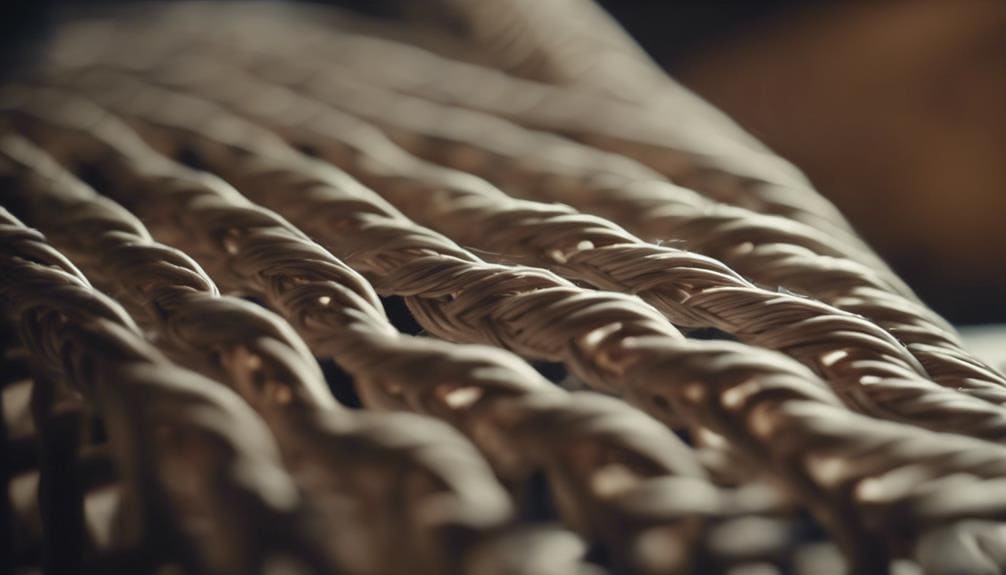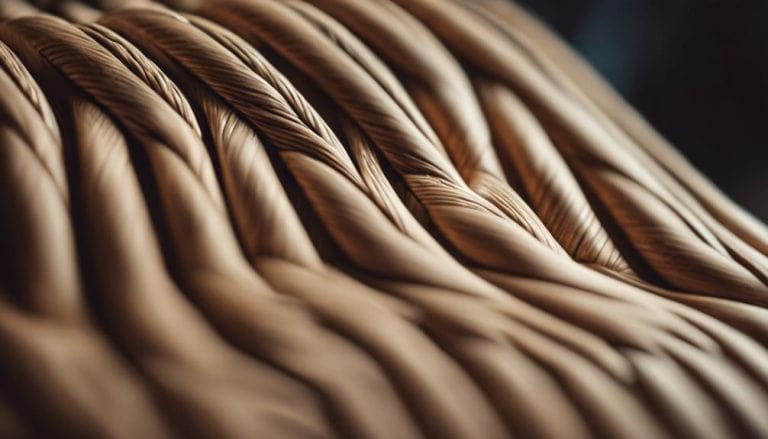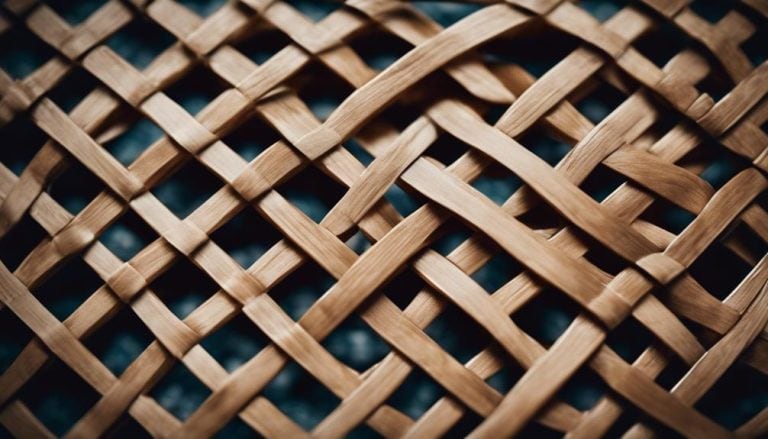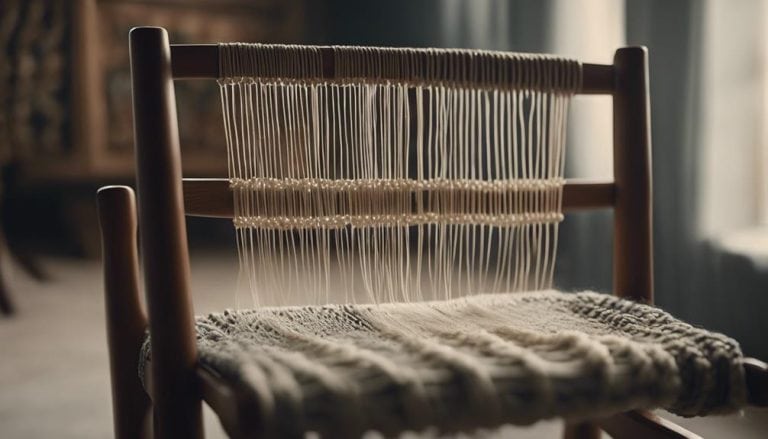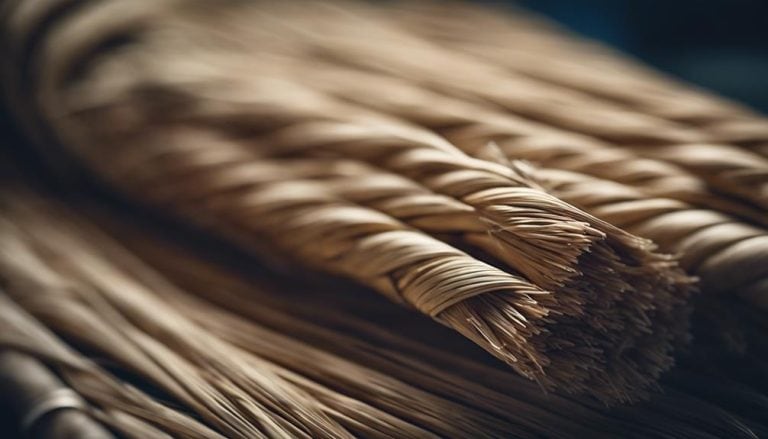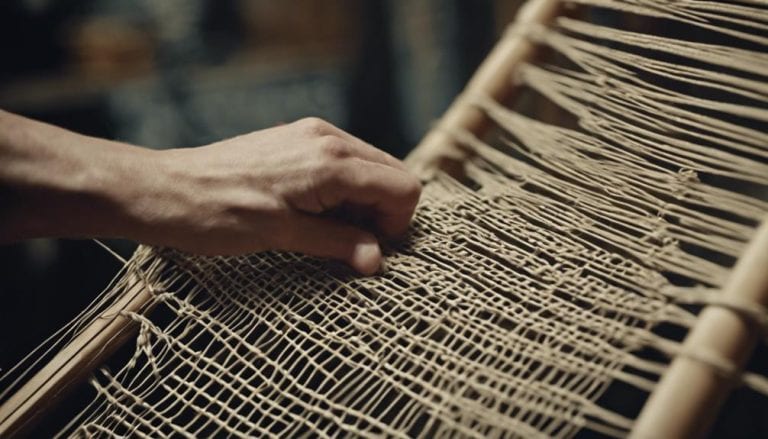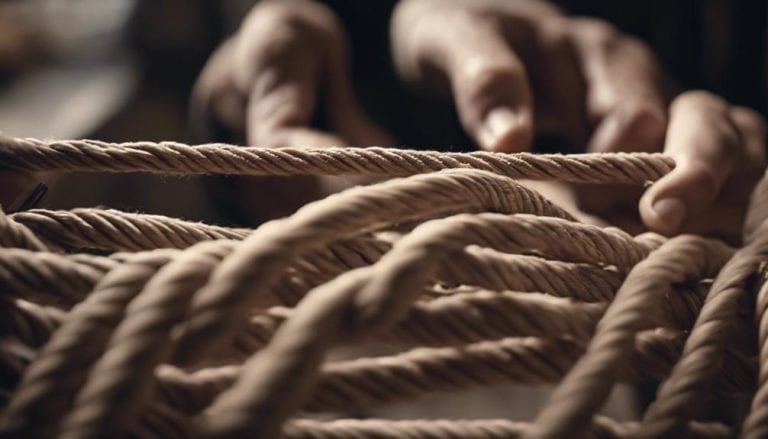Danish Cord Weaving Patterns and Techniques
As I unravel the intricate world of Danish cord weaving, the interplay of patterns and techniques unveils a captivating story of craftsmanship and precision. The art of Danish cord weaving holds secrets that transform simple chairs into timeless pieces of functional art.
From the meticulous cow-hitch knots to the strategic placement of warp cords, every step in the weaving process creates a seat that seamlessly blends beauty and durability. Let’s explore how these weaving patterns and techniques intertwine to bring life and character to each woven creation, inviting us to appreciate the artistry behind every chair.
Discover intricate Danish weaving designs and methods, crafting unique textile patterns with cord. Learn about traditional techniques that have been passed down through generations.
Key Takeaways
- Mastery of basic techniques is essential for intricate Danish cord-weaving designs.
- Traditional patterns like Moller weave and envelope weave reflect Danish craftsmanship.
- Advanced techniques like Moller weave and cow-hitch knots elevate weaving complexity.
- Innovative design applications enhance comfort and aesthetics in Danish cord chairs.
Danish Cord Weaving Basics
Exploring the foundational techniques of Danish cord weaving unveils a world where intricate patterns intertwine with secure weaving methods to create stunning chair seats. Understanding the essential techniques is key to mastering this craft when delving into Danish cord weaving basics.
The warp and weft weaving variations are crucial in creating the unique patterns that adorn Danish cord chair seats. By grasping these basic techniques, we can appreciate the artistry and precision required to achieve the intricate designs seen in Danish cord weaving. Weaving variations in Danish cord can range from classic patterns to more complex and elaborate designs.
The versatility of Danish cord allows for a wide array of weaving styles, allowing artisans to experiment and create visually captivating chair seats. By mastering the basic techniques and exploring different weaving variations, one can truly appreciate the beauty and craftsmanship that goes into Danish cord weaving.
Traditional Weaving Patterns
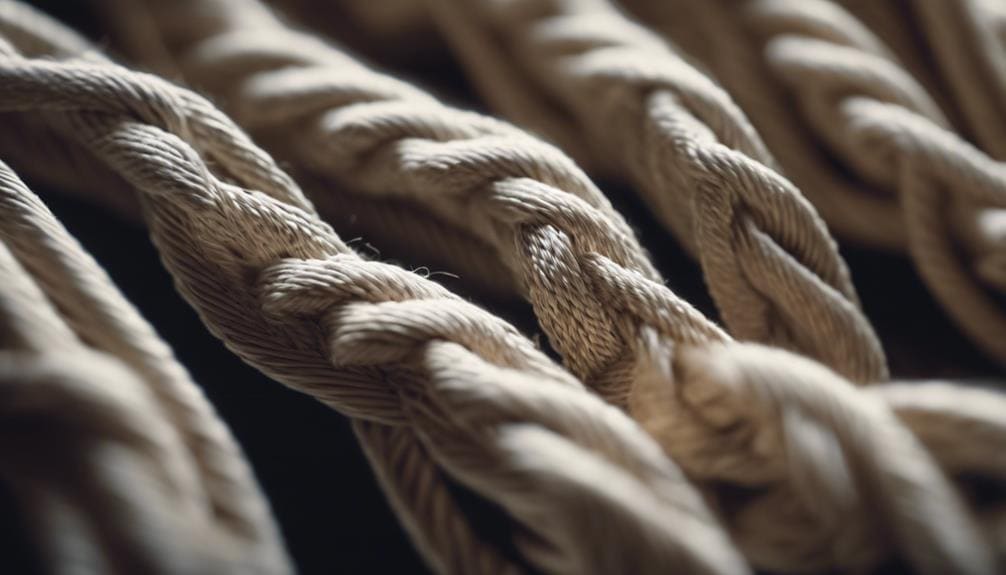
As we venture into traditional weaving patterns in Danish cord, we encounter widely practiced techniques like the Moller weave and envelope weave, known for their distinct and intricate designs. The historical origins of these patterns date back to traditional Danish craftsmanship, where attention to detail and precision were highly valued.
With its unique over-under technique, the Moller weave creates a visually striking pattern that adds depth to the woven piece. On the other hand, the envelope weave pattern, another common technique in Danish cord weaving, showcases the weaver’s skill in manipulating the warp and weft directions to achieve a cohesive design.
| Traditional Weaving Patterns | |||
|---|---|---|---|
| Pattern | Description | Artistic Inspirations | Cultural Significance |
| Moller Weave | Unique over-under technique | Danish heritage | Traditional craftsmanship |
| Envelope Weave | Common technique in Danish cord | Nature and geometry | Connection to Danish culture |
Advanced Weaving Techniques

Delving into advanced weaving techniques reveals intricate patterns and challenges that demand a deep understanding of warp and weft interactions. In advanced Danish cord weaving, techniques like the Moller weave showcase the beauty of complex patterns achievable through skillful manipulation of cords. Cow-hitch knots and slot weaving techniques are commonly employed in these advanced patterns, adding layers of sophistication to the design.
To achieve a professional finish in advanced weaving, precise cord management is essential. Ensuring the right tension in the cords throughout the weaving process is crucial for maintaining the integrity of the pattern. Challenges such as managing cord tension and smooth transitions between different sections of the weave test the weaver’s expertise and attention to detail.
Mastering advanced weaving techniques not only results in stunning creations but also hones one’s ability to control the intricate dance of warp and weft, elevating Danish cord weaving to a level of artistry that demands dedication and precision.
Innovative Design Applications
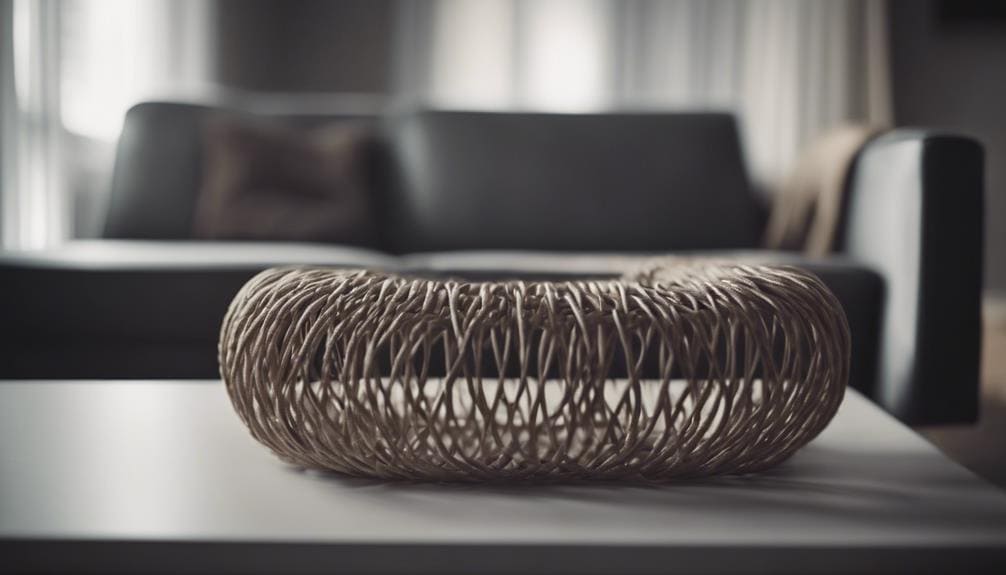
Building upon the intricacies of advanced weaving techniques, the innovative design applications of Danish cord weaving introduce a realm of creativity that integrates comfort and aesthetics seamlessly, particularly exemplified in chair design.
- Ergonomic benefits: Incorporating lumbar support in chairs woven with Danish cord enhances comfort, promoting better posture and reducing strain on the lower back.
- Customization options: By combining Danish cord for a chair’s seat and back, designers can offer customization options that create a cohesive and visually appealing look tailored to individual preferences.
- Artistic possibilities: Exploring different weaving patterns elevates the aesthetics of a chair design and adds a unique touch, making each piece a work of art.
- Functional considerations: Understanding the relationship between vertical supports and weaving patterns is crucial for successful chair construction, harmonizing both structural integrity and visual appeal.
Maintenance and Care Tips
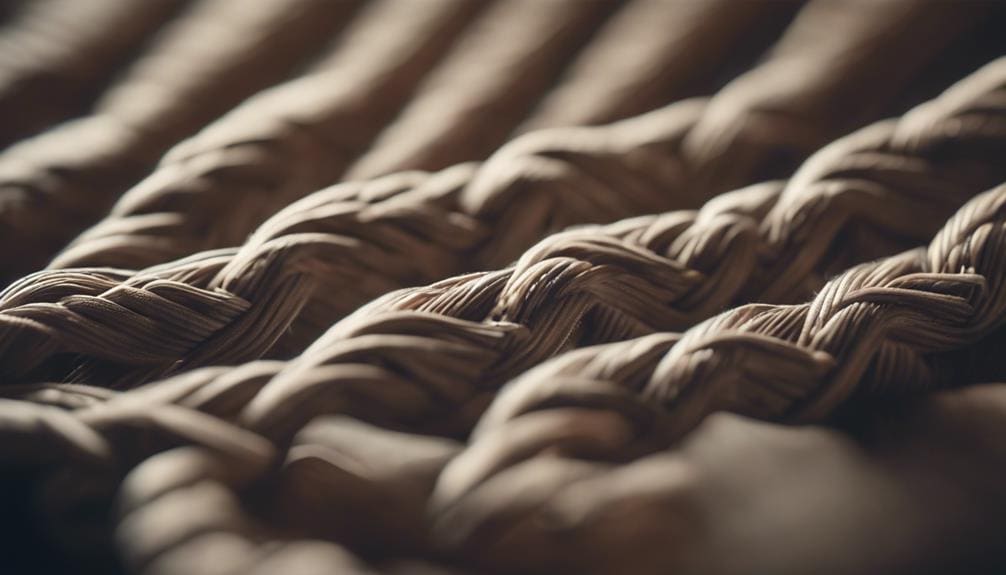
Regular cleaning and inspection are essential to maintain Danish cord seats’ longevity and pristine condition. Regularly dusting and vacuuming the seats will prevent dirt buildup and ensure cleanliness. It’s crucial to avoid exposing Danish cord seats to direct sunlight as this can cause fading and weaken the fibers over time. When cleaning, use a damp cloth with mild soap to gently remove stains, avoiding harsh chemicals that could damage the cords.
Maintenance Tips Table:
| Maintenance Task | Frequency | Details |
|---|---|---|
| Dusting and Vacuuming | Weekly | Prevents dirt buildup |
| Avoiding Sunlight | Daily | Prevents fading and weakening |
| Gentle Cleaning | As needed | Use mild soap and damp cloth |
| Inspection and Repair | Monthly | Check for wear, fraying, repair promptly |
Regularly inspect the Danish cord seats for any signs of wear or damage, such as fraying or loose cords, and repair them promptly to prevent further deterioration. Additionally, rotating and flipping cushions with Danish cord seats periodically will ensure even wear, prolonging the lifespan of the weaving.
Frequently Asked Questions
What Are the Different Types of Danish Cord Weaving?
I love exploring the artistry of Danish cord weaving. The color combinations and texture variations in different weaves showcase the intricate beauty of this craft. Seeing how each pattern can transform a chair’s aesthetic is fascinating.
What Is the Nail Spacing for Danish Cord Weaving?
Nail spacing in Danish cord weaving depends on cord thickness and weaving tension. Weaving tools and maintenance tips are crucial for quality results. Spacing warp pairs close to rail ends ensures a secure weave.
What’s the Difference Between Laced and Unlaced Danish Cord?
I love how the laced Danish cord showcases loops on the surface, adding a charming touch. Unlaced cord, on the other hand, offers a sleek, modern look. Both options provide versatility in color choices to suit various design preferences.
How Is Danish Cord Made?
Creating a Danish cord involves twisting treated paper into a 3-ply rope. This historical process results in a durable material for weaving chair seats. The meticulous techniques in crafting Danish cord ensure strength and authenticity in intricate designs.
Conclusion
After delving into Danish cord-weaving patterns and techniques, I can confidently say that the artistry and precision required to create these intricate designs are truly remarkable. The theory that mastering Danish cord weaving can elevate chair-making skills is proven true through the meticulous attention to detail and craftsmanship in creating these beautiful woven chairs. With practice and dedication, anyone can learn to weave stunning patterns and elevate their woodworking skills.

